Branding Downtown Marketing Trends 2023
When it comes to branding, oh boy, do we have a lot to say. Certain adages come to mind: “A rose by any other name…”. Or one of our co-founder’s personal faves, “Your brand is not what you say it is — it’s what others say about you when you’re not in the room,” and these are loaded statements. Let’s unpack these a little.
It’s important to remember that your brand isn’t just logos and fonts and color palettes. It’s the sum total of your reputation, how well your website functions, the types of programming, placemaking, clean and safe, and support you provide your community, and so much more. And all ego aside, your brand is what the community thinks about you, not just the narrative you try to sell. So if the community thinks parking sucks downtown, then guess what? Parking sucks downtown. And it’s now your job to dispel the myth or drive the narrative in a different direction.
To start, let’s consider community engagement. We’ve seen tons of organizations go through the process of gathering the entire team, huddling, and brainstorming. While that might work in some scenarios, a top-down approach is rarely the best. And we’ve seen examples of community backlash when they weren’t invited to the table. So what’s the best approach to starting your branding process? Community engagement, of course.
If the agency you select to guide you through the branding process does not include community intercept surveys, polls, face-to-face intake, or other forms of community involvement and crowdsourcing, you’re doomed to fail. Make sure there’s an entire section in their proposal before you sign the contract! And any agency worth its salt will have a clearly outlined process for this and can explain how the results inform the branding process.
You only know what you know, so starting with a ground-up, grass-roots intake session should affirm and validate that your mission is aligned with the community’s needs — or help you identify areas of opportunity for improvement that can be addressed in your new brand.
Ask the community questions like:
- How are we doing?
- What do you like best?
- What should our priorities be?
- What would make you spend more time downtown?
- What keeps you from doing X downtown?
- What do want to see more of?
- I like downtown because it’s XYZ…
Ask lots of qualitative questions. Offer a mix of formatting styles of questions. Lists of common adjectives describing downtown, also provide invaluable insights.
This type of community engagement will inform your organization and provide answers to just what people say your brand is. You may or may not like everything you learn, but the feedback should be honest and help you understand controllable aspects of your brand. It also leads to a better understanding of your constituents’ needs, wants, and barriers to entry.
Bright Brothers Strategy Group uses community engagement surveys as part and parcel of our Persona Development Process. The Personas are a perfect amalgamation of qualitative and quantitative data, and can then be used for:
- Brand development
- Marketing and Communications strategies
- Program development
- Placemaking
- Website, social, and advertising copy
- SEO
- Economic Development
- Events and Activations
- … and a whole host of related district initiatives
When you start your processes by asking, listening, and engaging with the community, you better understand their needs and can develop a responsive organization that is in tune with the community and meets their needs.
But this is just the first step in developing your brand. Since the pandemic, we’ve seen a host of organizations attempt to rebrand their districts — with varying degrees of success. Your brand should be flexible, dynamic, multi-faceted, and able to connect with various communities locally and afar, and above all, be authentic.
ELEMENTS
So you’ve done your due diligence. You’ve listened to the community, synthesized their feedback, and developed your new branding. That’s only part of the picture. What comes to mind when you think of your brand (logo, accents, font families, and color palette) is really your visual identity. Your brand is still the total of your district and organization overall, your merchants and their associated brands, your streetscape and public realm, your level of cleanliness and attractiveness, your events, activations, and more. And overall, your website, the ratings and reviews of your district and merchants, and most importantly, the user-generated media coming out of your district are of paramount importance as well.
Every photo, every video, every review and rating tagged with your district is part of your brand. And remember that nearly 40% of Gen Z prefer TikTok and Instagram for search over Google! So that percentage gains exponential weight when you consider Millennial behaviors, Gen X actions, and more.
This is how people plan trips and travel now. This is how people determine where they want to live, work, shop, or relocate to. This is a significant part of your brand. And while you cannot control every aspect of every Yelp review, Facebook rating, Google My Business comment…etc. surrounding your district — you should be driving the narrative around what is controllable. Much of this starts with claiming/owning your Google My Business account for the district and actively managing it.
But again, your brand is so much more than your visual identity and online text, images, and video. It goes beyond that, and one trend we kept major tabs on in the past year is sonic branding.
ALL THINGS AUDIO
Aside from podcasts (and yes, you can easily buy media on podcasts), other audio opportunities exist as well. If you manage ads on Google, you can purchase 15-second spots (there’s that magic number again!) directly through your Google Ad Account that play as interstitials on YouTube and more.
Furthermore, to big brands and audio, the past few years saw some amazing innovations that will impact 2023 and beyond:
- Gabe Alonso, who heads up digital platforms and community for PepsiCo, proposes that your brand needs to have a signature sound. From TikTok to podcasts and live audio to earworms, Gabe says that the audible element of your brand is just as important as how you look and feel.
- MasterCard launched a 10-layer sonic branding plan that includes numerous audio assets, and even an album of original songs.
- Chip brand Tostitos (owned by PepsiCo) worked with a sonic branding agency to drill down to discover the brand’s signature sound, what the agency calls its “inevitable sound,” and incorporated the sounds of a salsa jar lid popping open, plus the rustling of a chip bag as parts of their sonic logo.
- Fast-casual chain Panera developed not one, but four different versions of its new sonic logos in one-, three-, and six-second, as well as a long-form version, that all assist with brand recall and sales lift.
- Social media management software Hootsuite launched a wild sonic logo along with a Mortal Kombat Easter Egg for fans.
- The Wikimedia Foundation (yes, those brainy folks behind Wikipedia and more), held a competition to define The Sound of All Human Knowledge last year, in building their sonic logo. This is also a great example of community engagement with the contest.
- Headspace and Orangetheory appointed new CMOs (Chief Music Officers) to their C-suites to invest in their sonic identities.


